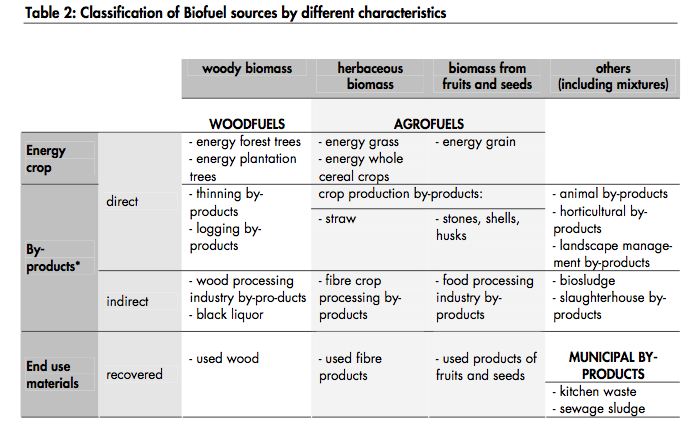Click here to register!
Difference between revisions of "Biofuels"
***** (***** | *****) |
***** (***** | *****) |
||
| Line 18: | Line 18: | ||
| − | == Classification of biofuel according to generations == | + | |
| + | === Classification of biofuel according to generations === | ||
Biofuels are generally classified as first , second and third generations: | Biofuels are generally classified as first , second and third generations: | ||
| Line 29: | Line 30: | ||
<br/> | <br/> | ||
| + | |||
== <br/> == | == <br/> == | ||
Revision as of 11:25, 4 March 2014
Introduction
Biofuels are liquid or gaseous fuels produced from biomass that are generally high in sugar (such as sugarcane , sugarbeet , sweet sorghum) , starch (such as corn and cassava) or oils (such as soybeans, rapeseed, coconut, sunflowers, and palms).[1] The two most commonly used biofuels are ethanol and biodiesel.[2]
.
Classification of Biofuel Sources
Classification of Biofuel sources according to Food and Agricultural Organization (FAO)[3].
- *The term “by-products” includes the improperly called solid, liquid and gaseous residues and wastes derived from
Classification of biofuel according to generations
Biofuels are generally classified as first , second and third generations:
First-generation biofuels are made from sugar, starch, vegetable oil, or animal fats using conventional technology. These are generally produced from grains high in sugar or starch fermented into bioethanol; or seeds that which are pressed into vegetable oil used in biodiesel. Common first-generation biofuels include vegetable oils, biodiesel, bioalcohols, biogas, solid biofuels, syngas.
Second-generation biofuels are produced from non-food crops, such as cellulosic biofuels and waste biomass (stalks of wheat and corn, and wood). Common second-generation biofuels include vegetable oils, biodiesel, bioalcohols, biogas, solid biofuels, and syngas. Research continues on second-generation biofuels including biohydrogen, biomethanol, DMF, Bio-DME, Fischer-Tropsch diesel, biohydrogen diesel, mixed alcohols and wood diesel.
Third-generation biofuels are produced from extracting oil of algae – sometimes referred to as “oilgae”. Its production is supposed to be low cost and high-yielding – giving up to nearly 30 times the energy per unit area as can be realized from current, conventional ‘first-generation’ biofuel feedstocks.[4]




















